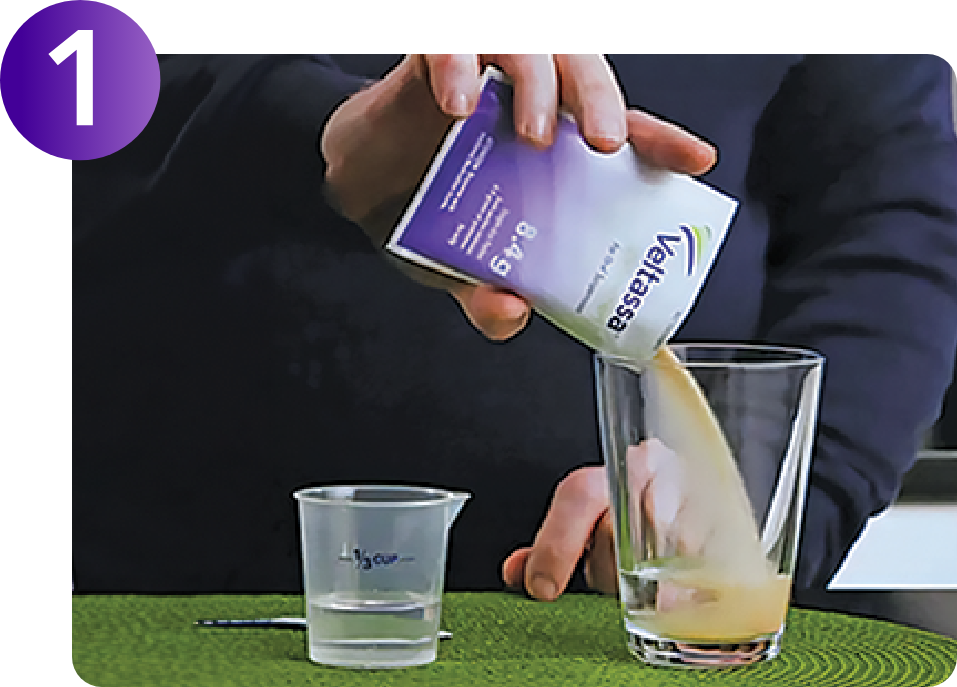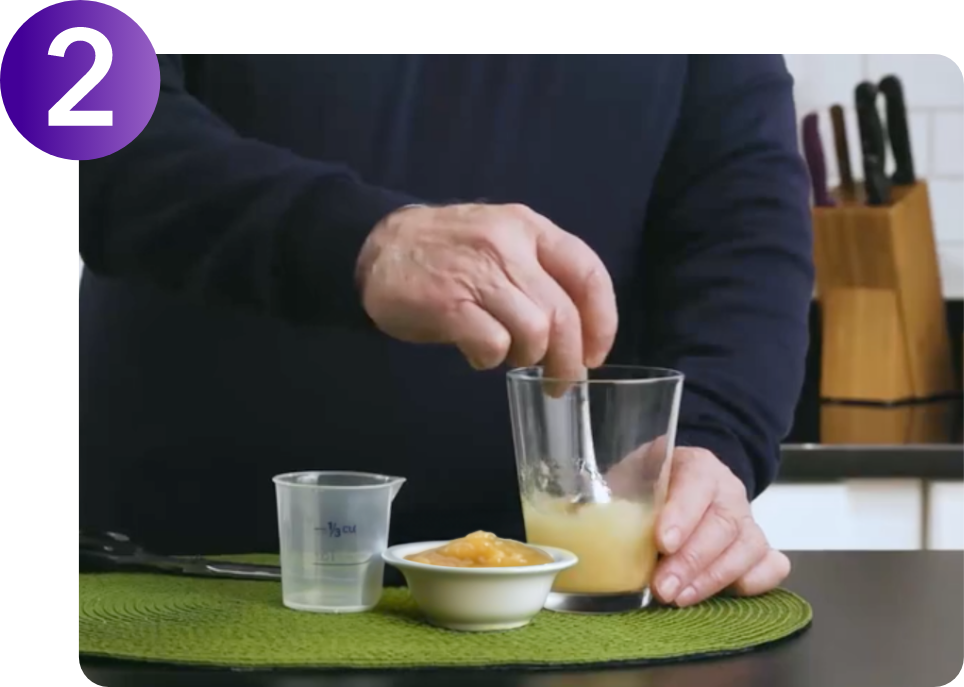Patients can prepare unflavored VELTASSA their way
Only VELTASSA has options that include water, other beverages, and soft foods, such as applesauce, yogurt, and pudding.*

MIX
half of the water, other beverages, or soft food with the entire packet(s) contents, then stir.

ADD
the other half of the water, other beverages, or soft food and stir.

DRINK OR EAT IMMEDIATELY
Add additional water, other beverages, or soft food and drink or eat as needed to ensure entire dose is administered.
VELTASSA should not be heated (eg,
microwaved) or added to heated foods
or liquids and should not be taken in its
dry form.

*The potassium content of liquids or soft foods used to prepare the mixture should be considered based on each patient’s dietary restrictions.
†VELTASSA should be stored in the refrigerator at 36°F to 46°F. If stored at room temperature (77°F ± 4°F), VELTASSA must be used within 3 months of being taken out of the refrigerator. Do not use VELTASSA after the expiration date printed on the packet.
Help your patients take VELTASSA correctly
Next
